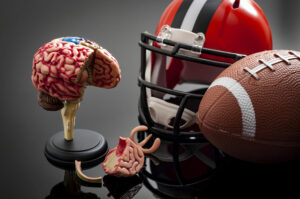Doctors have a new set of guidelines to consult when treating adult patients with persistent post-concussion symptoms.
Dr. Shawn Marshall, lead author, says that concussions are commonly thought of as a sports injury. But many concussions come “from mishaps of daily living, such as slipping on the ice while walking the dog, falling down the stairs at home, or being in a car crash.”
The new guidelines take a broader view of concussion management. They help doctors get their patients back to work, school, and family.
Rest is the first step when treating a concussion. But for the 10 to 15% of adults with persistent symptoms, more active treatment is necessary, says Dr. Marshall.
Leah Braithwaite was knocked down by a beginner skier in 2011. “It was an unremarkable fall,” says Braithwaite. “But the consequences on my work and family life have been anything but trivial.” Braithwaite says her doctor had no problem diagnosing her concussion but didn’t have a program to manage her lasting, debilitating symptoms.
It took four months to find a specialist able to properly address Braithwaite’s symptoms and get her back to work and family.
“I hope these guidelines will help a lot of people start that journey sooner,” says Braithwaite.
After two-and-a-half years, Braithwaite still battles headaches and fatigue but feels lucky to have returned to her previous activity level.
The guidelines include ways for physicians and other clinicians to objectively evaluate, monitor, and manage symptoms in patients 18 years and older. They also provide concrete strategies and tools for all types of healthcare providers.
The guidelines are free and readily available:







